
S&P 500 High Beta ETF (SPHB)
Continuing with the volatility-related themes in recent Research by Potomac content, we are focusing on the S&P 500 High Beta ETF (SPHB) today.
SPHB has historically provided investors with a vehicle to obtain magnified exposure to the S&P 500. This is particularly useful should investors have an Investment Policy Statement that prohibits them from utilizing leverage in a portfolio. Additionally, rather than increasing the percentage allocation to equities, investors can theoretically obtain magnified equity exposure through this ETF without overwriting the asset class in balanced portfolios, should they feel that expressing that view through that method is appropriate.
As market volatility remains elevated, Google trends showed that investors’ interest in highly-volatility stocks in the Finance category has naturally fallen over the past five years. In our previous note on the S&P 500 Low Volatility ETF, we highlighted investors heightened interest in Low Volatility stocks.
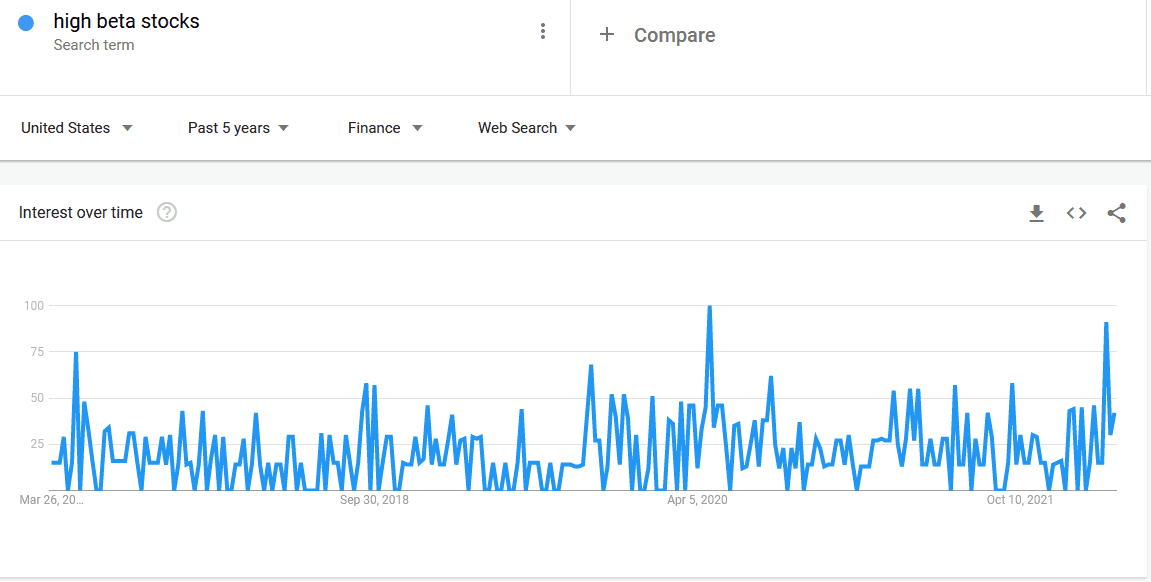
*Data via Google Trends as of 3/24/22
Before we dive into the holdings and performance, we first need to break down the selection method of the strategy behind the S&P 500 High Beta ETF.
The ETF draws its components from the S&P 500 High Beta Index and selects the 100 stocks with the highest trailing one-year Beta to the S&P 500. Weights are then selected in proportion to the stock’s Beta to the S&P 500.
So, what is Beta? This metric is one of the most cited risk measurements for individual and portfolio composites alike. In its most simple form, Beta is the amount of relative volatility or volatility that is correlated with a benchmark. There is a myriad of mathematical equations that will generate the metric, but the simplest is the correlation coefficient of the asset and the benchmark, multiplied by the standard deviation of the asset, divided by the standard deviation of the benchmark.
For example, an asset with a Beta of one indicates that it moves in direct proportion with the benchmark, while an asset with a Beta of 0.5 indicates that it has roughly 50% of the market-related sensitivity. Beta can be negative, and this often occurs with highly volatile, and assets that are uncorrelated to the benchmark. SPHB’s monthly Beta is currently 1.54 relative to SPY, the SPDR S&P 500 ETF.
The operative word in the Beta metric is “relative.” Depending on how closely the asset in question moves with the index, its volatility could potentially be extremely high or extremely low. Beta can be somewhat deceiving because low metrics are often interpreted as “safer.” While this can be accurate, it is by no means a requirement.
Despite drawing its universe from the S&P 500, there’s only a 16% overlap by weight in the S&P 500, signifying a high degree of outsized positioning relative to the benchmark. What’s noteworthy here is that SPHB achieves this differentiation without large overweighs to a handful of holdings.
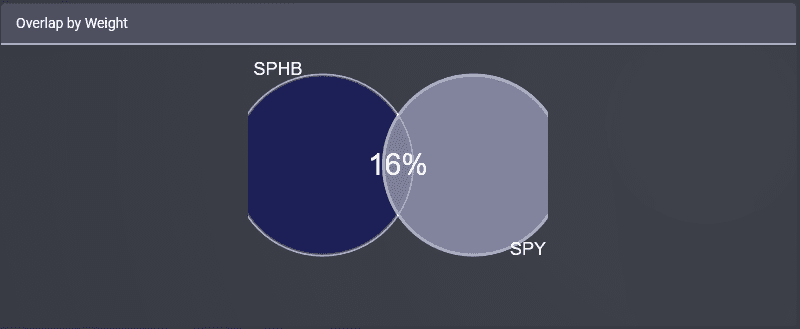
*Data via ETFRC.com as of 3/24/22
Top 10 Holdings

*Data via fundvisualizer.com as of 2/28/22
While the individual stock weights are muted relative to the index, the real differentiation shows in the sector weightings. SPHB’s largest sector weight is Technology at 47.05% relative to the S&P 500’s 25.60%. While the single stock risk is mitigated in SPHB, sector allocation is a potential risk.
Notice the 0% allocation to Consumer Defensives (Staples), Real Estate, and Utilities. Investors utilizing this position should be keenly aware of the impact that it could have on the total equity sector allocation when either adding or subtracting this position from an existing portfolio.
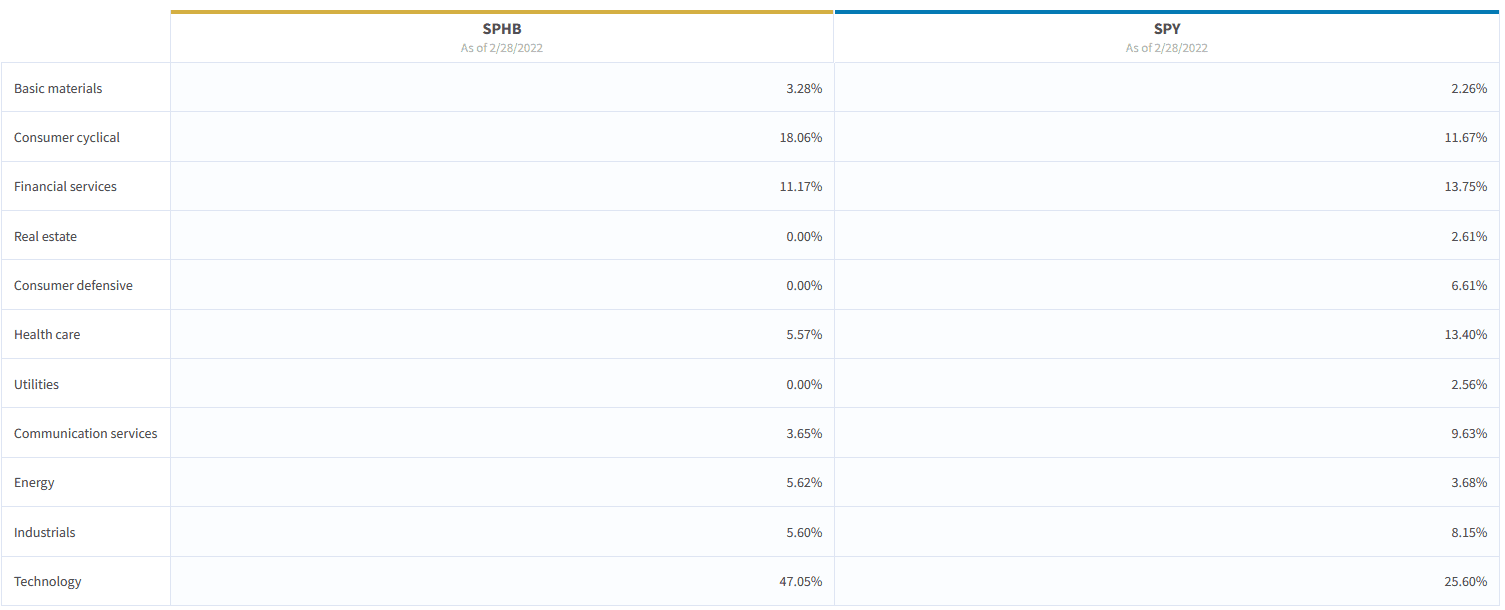
*Data via fundvisualizer.com as of 2/28/22
Additionally, the components of SPHB mimic the returns of Small and Mid-Cap Value much more closely than SPY.

*Data via portfoliovisualizer.com as of 2/28/22. Monthly returns.
While SPHB has the potential to outperform due to magnified market exposure, that same return exposure is also the source of outsized risk with a -36.22% maximum monthly drawdown for SPHB compared to -19.43% for SPY since SPHB’s inception in 2011.
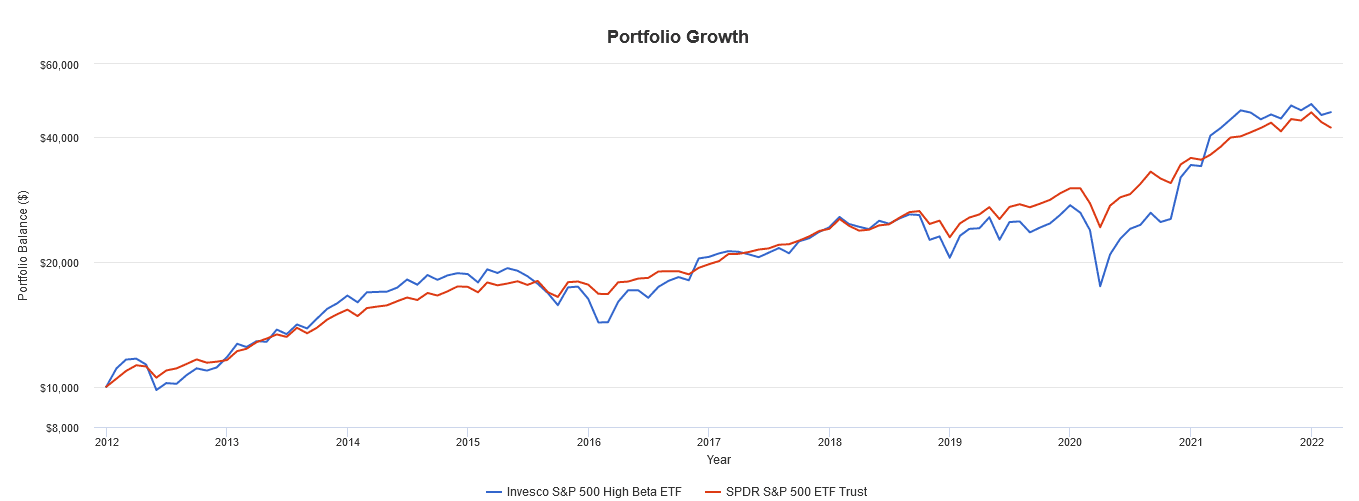
*Data via portfoliovisualizer.com as of 2/28/22. Monthly returns.
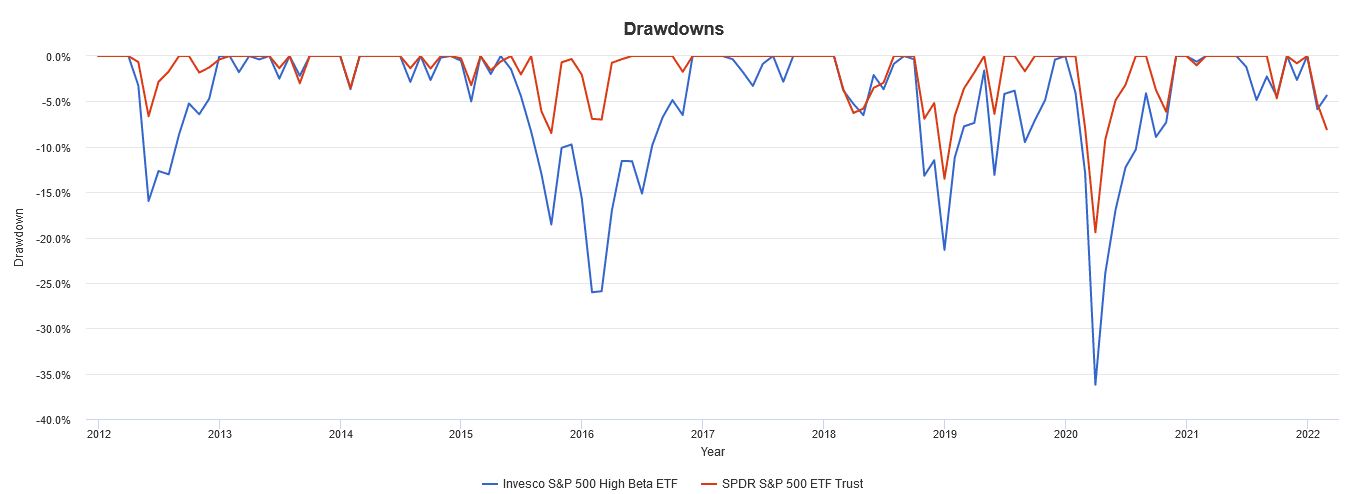
*Data via portfoliovisualizer.com as of 2/28/22. Monthly returns.
Disclosure: This information is prepared for general information only and should not be considered as individual investment advice nor as a solicitation to buy or offer to sell any securities. This material does not constitute any representation as to the suitability or appropriateness of any investment advisory program or security. Please visit our FULL DISCLOSURE page.
